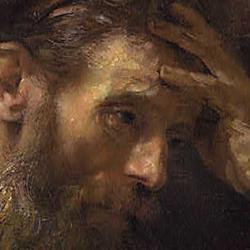In the aforementioned article, Arnold notes that “in the Greek Magical Papyri, the term stoicheia is used most commonly in connection witht he stars and/or the spirit entities, or gods, they represent. In a related sense, stoicheia was also used to refer to the 36 astral decans that rule over every 10 degrees of the heavens . . . . Each of these astral decans could also be represented by a magical letter. Given one of the common usages of stoicheia as letters of the alphabet, it is easy to see how this usage could have arisen.” He argues that “it is quite probably that the term stoicheia was used of astral decans in the first century A.D. or prior.”
In his commentary on Revelation ( Social-Science Commentary on the Book of Revelation ), Bruce Malina suggests that this is also the background to the “elders” that appear surrounding Yahweh’s throne in Revelation 4:
“As celestial personages, the twenty-four elders about the central throne of God fit the profile of those truly significant astronomic beings of antiquity, the astral deities known as decans. The word decan (from the Greek deka , meaning ‘ten’) is a creation of the Hellenistic period to designate the astral deities who dominate every 10 degrees of the circle of the zodiac (hence thirty-six). These deities are far more ancient than the Hellenistic period, deriving from Egypt in Pharaonic times . . . . As astral deities, the decans exerted tremendous influence on the land below and its inhabitants.”
Malina argues that the numbers aren’t a problem. Usually there are thirty-six decans, but there is evidence from the second century A.D. that shows 24 decans. Coffin lids depict the sky goddess Nut surrounded by the signs of the Zodiac, and “on the sides of the cover are, to the left, the twelve decans of the day and to the right the twelve decans of the night.” As Malina sees it, John is showing the decans as “sovereign astral beings, embracing the whole cosmos in the course of one night and one day, keeping watch over everything . . . . in previous perceptions the decans were considered guardians and rescuers of the whole cosmos, at the same rank as the highest of astral deities, beings of power and might second only to the highest God(s). It would seem the elders here, now in henotheistic context, are much the same.”
If this is right, then the fact that the elders toss down their crowns, crowns that the saints later pick up, suggests that the saints who rule in heavenly places now fill the function once played by the decans in the old covenant.











